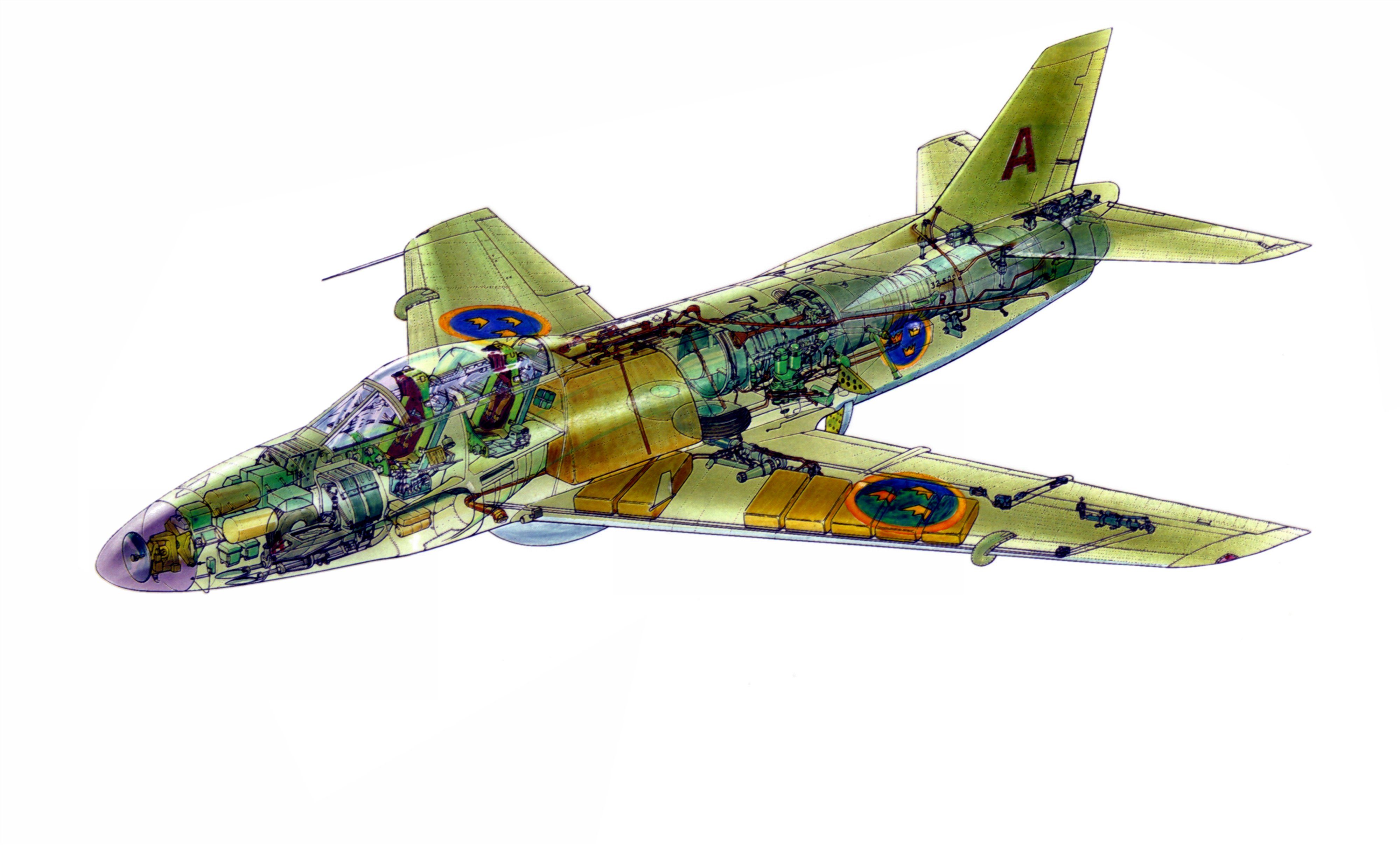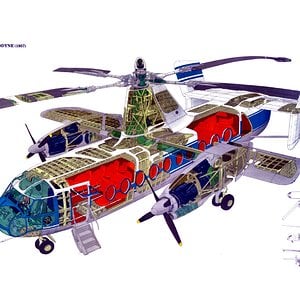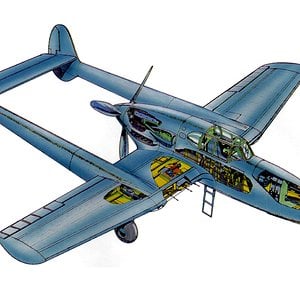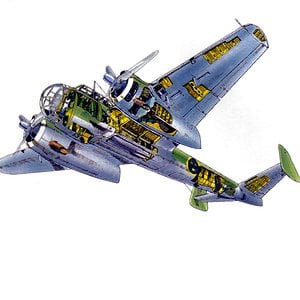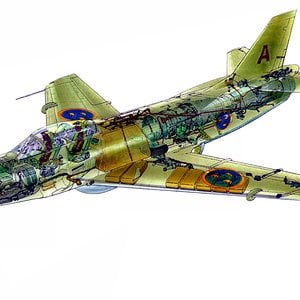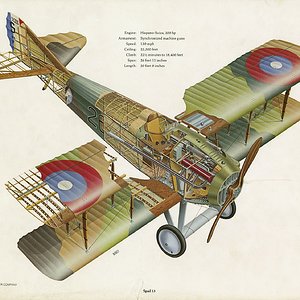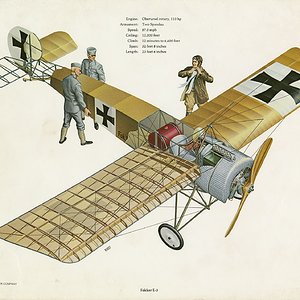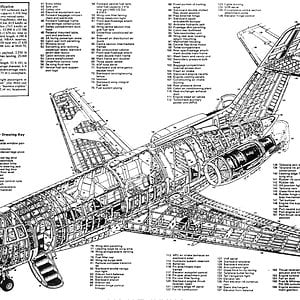Navigation
Install the app
How to install the app on iOS
Follow along with the video below to see how to install our site as a web app on your home screen.
Note: This feature may not be available in some browsers.
More options
You are using an out of date browser. It may not display this or other websites correctly.
You should upgrade or use an alternative browser.
You should upgrade or use an alternative browser.
Design and developmentThe Saab Company was approached in 1948 to develop a turbojet-powered strike aircraft to replace a series of 1940s vintage attack, reconnaissance and night-fighter aircraft in the Flygvapnet: the Saab B 18/S 18, J 21R/A 21R and J 30 (de Havilland Mosquito). The design was initially designated the P1150.
Swedish Air Force requirements for the P1150 were demanding: the aircraft had to be able to attack anywhere along Sweden's 1,245 miles (2000 km) of coastline within one hour of launch from a central location. It had to be capable of being launched in any weather, day or night. Special attention was to be paid to integrating the electronics and weapons systems to create the equivalent of today's weapons systems approach to combat aircraft design. The aircraft was to be armed with four 20 mm cannons, rockets, bombs and/or a new anti-ship missile being developed, the Rb 04.
The design team created a sleek airframe with clean lines powered by a license-built Rolls-Royce Avon Series 100. Uniquely, the design of the swept wings was the result of an early application of computer technology. To test the 35° sweepback design, a half-scale wing was mounted on a Saab Safir, the Saab 202 Safir. The design initially featured both Fowler flaps and a leading edge slot. The slot was discarded as unnecessary after trials with the prototypes and never appeared on a production aircraft. A small batch of P1150 prototypes completed design and evaluation trials with series production of the newly renamed Saab J 32 Lansen (J for "Jakt" [Fighter]) beginning in 1953. There were no trainer versions, but some Lansens had rudimentary controls installed in the rear seat.
Specifications (J 32B)Data from The Great Book of Fighters,[5]Combat Aircraft since 1945 [1]
General characteristics
Crew: 2
Length: 14.94 m (49 ft 0 in)
Wingspan: 13.0 m (42 ft 8 in)
Height: 4.65 m (15 ft 3 in)
Wing area: 37.4 m² (402.6 ft²)
Empty weight: 7,500 kg (16,535 lb)
Max takeoff weight: 13,500 kg (29,760 lb)
Powerplant: 1 × Svenska Flygmotor RM 6A afterburning turbojet, 47.0 kN dry, 65.3 kN with afterburning (10,560 lbf / 14,685 lbf)
Performance
Maximum speed: 1200 km/h (745 mph)
Range: 2,000 km (1,240 mi)
Service ceiling: 15,000 m (49,200 ft)
Rate of climb: 100 m/s (19,685 ft/min)
Armament
4 × 30 mm ADEN cannons 90 rounds each
4 × Rb 24 air-to-air missiles
4 × 75 mm air to air rocket pods
Swedish Air Force requirements for the P1150 were demanding: the aircraft had to be able to attack anywhere along Sweden's 1,245 miles (2000 km) of coastline within one hour of launch from a central location. It had to be capable of being launched in any weather, day or night. Special attention was to be paid to integrating the electronics and weapons systems to create the equivalent of today's weapons systems approach to combat aircraft design. The aircraft was to be armed with four 20 mm cannons, rockets, bombs and/or a new anti-ship missile being developed, the Rb 04.
The design team created a sleek airframe with clean lines powered by a license-built Rolls-Royce Avon Series 100. Uniquely, the design of the swept wings was the result of an early application of computer technology. To test the 35° sweepback design, a half-scale wing was mounted on a Saab Safir, the Saab 202 Safir. The design initially featured both Fowler flaps and a leading edge slot. The slot was discarded as unnecessary after trials with the prototypes and never appeared on a production aircraft. A small batch of P1150 prototypes completed design and evaluation trials with series production of the newly renamed Saab J 32 Lansen (J for "Jakt" [Fighter]) beginning in 1953. There were no trainer versions, but some Lansens had rudimentary controls installed in the rear seat.
Specifications (J 32B)Data from The Great Book of Fighters,[5]Combat Aircraft since 1945 [1]
General characteristics
Crew: 2
Length: 14.94 m (49 ft 0 in)
Wingspan: 13.0 m (42 ft 8 in)
Height: 4.65 m (15 ft 3 in)
Wing area: 37.4 m² (402.6 ft²)
Empty weight: 7,500 kg (16,535 lb)
Max takeoff weight: 13,500 kg (29,760 lb)
Powerplant: 1 × Svenska Flygmotor RM 6A afterburning turbojet, 47.0 kN dry, 65.3 kN with afterburning (10,560 lbf / 14,685 lbf)
Performance
Maximum speed: 1200 km/h (745 mph)
Range: 2,000 km (1,240 mi)
Service ceiling: 15,000 m (49,200 ft)
Rate of climb: 100 m/s (19,685 ft/min)
Armament
4 × 30 mm ADEN cannons 90 rounds each
4 × Rb 24 air-to-air missiles
4 × 75 mm air to air rocket pods

